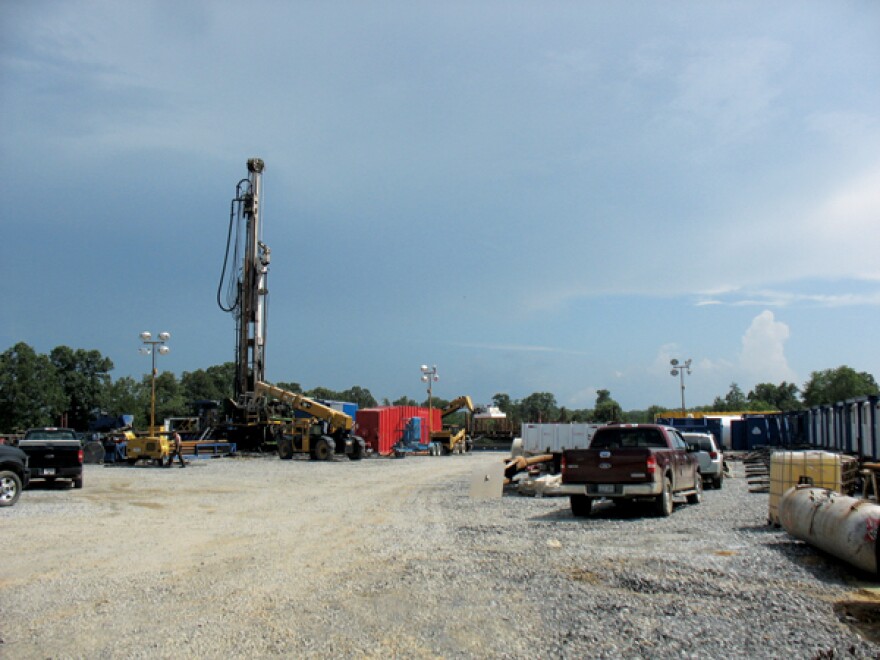Arkansas’ rig count has fallen to levels not seen in nearly a decade as natural gas drillers and oilfield equipment firms continue to cut capital spending as oil and gas prices search for a bottom.
At the same time, Arkansas severance tax collections hit a sudden headwind, falling precipitously by 47.5% from $6.08 million a year ago to nearly $3.19 million in February. State tax revenue for natural gas production also fell nearly 50% from $6.27 million in January, according to tax data compiled by the Revenue Division of the Arkansas Department of Finance & Administration.
But James Williams, oil and gas analyst and publisher of the closely-watched Energy Economist newsletter, said he believes that the current downturn is not permanent because of the cyclical nature of oil and gas prices.
“Production is still holding pretty well the last time I looked at the numbers, and I think gas prices will improve and recover by the end of the year,” said Williams, based in London, Ark. “We are not going to see the 30 or 40 rigs we saw during the peak years in the (Fayetteville) shale, but prices will improve and then we will see drilling again.”
Still, the abrupt decline in severance tax collections comes only months after Arkansas’ natural gas tax revenues production touched a record high in December, rising a whopping 81% to $7.8 million compared to $4.3 million in 2013.
For the three month quarter ended Dec. 31, 2014, collections were up 41.6% from $14.1 million for the same quarter of fiscal 2013, according to state tax officials. Those record monthly and quarterly totals, however, were largely due to next-generation drilling techniques and high well production that allowed severance tax collections in Arkansas to end fiscal year on June 30, 2014 at an all-time high of $77.3 million.
That pace continued through the first six months of fiscal 2015, which began on July 1, 2015, with collections also reaching a record of $44.8 million at the halfway mark. But momentum came to a halt in January as collections for natural gas production were down 4.8% to nearly $6.3 million, compared to almost $6.6 million during the same period a year ago.
DECLINES PRECIPITATED BY UPSTREAM BUDGET CUTS
But the signs of this month’s precipitous fall in tax revenue were in the tea leaves in January when collections fell year-over-year for the first time since February 2013.
John Shelnutt, chief economist at the Arkansas Department of Finance and Administration (DFA), predicted last month that the state’s record tax revenues from natural gas production would eventually decline because of lower capital spending by drillers in the Fayetteville Shale, such as Southwestern Energy, ExxonMobil’s XTO Energy and Australia’s BHP Billiton.
“Yes, eventually the decline in capital spending will impact production and tax revenue,” Shelnutt said a month ago.
Overall, the number of rigs operating in Arkansas is now down to single digits at eight, a level not seen since the week of May 5, 2005. A year ago, there were 12 rigs actively drilling for oil and gas across the state of Arkansas.
The number of drilling rigs in Arkansas peaked in July 2008 at 60, when the prices for natural gas futures topped out at more than $13 per million cubic feet (Mcf) and oil prices rose to $147 a barrel. Since October 2011, when the state’s rig count hit 34, that number has trended downward.
Nationwide, Baker Hughes reported that the average U.S. rig count for February 2015 was 1,348, down 335 from the 1,683 counted in January 2015. However at the end of last week, there were only 1,028 oil and gas rigs in operation across the U.S., 20 less than the previous month.
Of those operating rigs, 802 were exploring for oil and only 222 were drilling for natural gas. Overall, it is the 17th straight week that the number of rigs drilling for oil and gas across the U.S. has declined. The U.S. Energy Information Administration recently reported that capital investment in the oil and gas sector was down 12% from a year ago as lower commodity prices reduced expected returns from future production.
“As a result, new exploration and development projects may be delayed or canceled, and reduced investments in producing fields can ultimately slow the growth in production,” the EIA reported, adding that most companies have already announced further spending reductions for the remainder of fiscal 2015.
As previously reported by Talk Business & Politics, Southwestern Energy recently announced it was cutting 40% of its investment in the unconventional Arkansas shale play. BHP has also cut its budget in the Arkansas shale play to only $100 million – a fraction of its original spending plans when it bought those assets for $4.75 billion in 2011.
Williams said the current downturn in the energy sector is similar to the oil glut in the mid-1980s when crude prices fell below $10 a barrel because of overproduction worldwide. He said it does not pay for U.S. oil and gas companies like Southwestern, ExxonMobil and others to continue drilling with oil and gas prices at current levels.
“If they do, they would end up bankrupt,” said the longtime Arkansas oil and gas analyst.
In Tuesday’s opening session on the New York Mercantile Exchange, prices for West Texas intermediate crude jumped $3, or 6.1%, to $52.14 as the framework of an Iranian nuclear deal raised hopes that the Middle East country would soon ramp up its oil supply. At the same time, natural gas futures fell 6.3 cents, or 1.32%, to $2.69 per million British thermal units.


